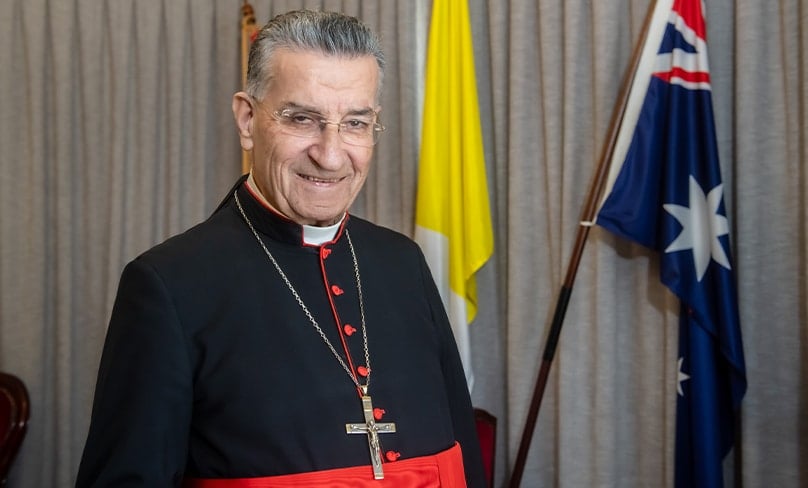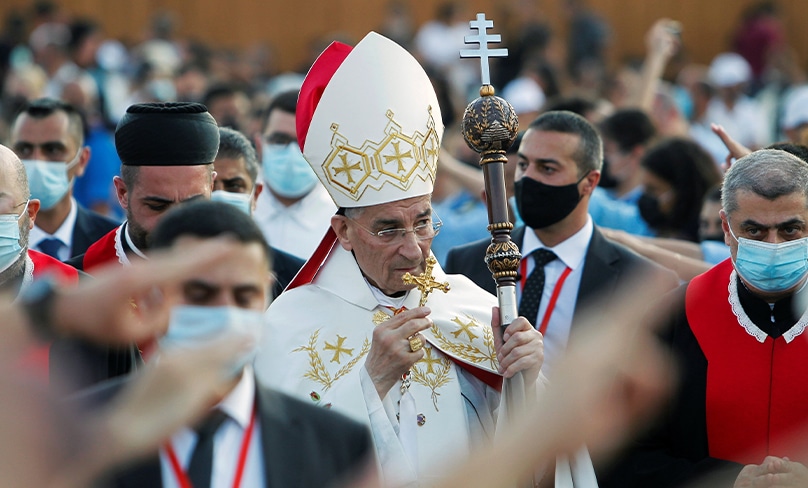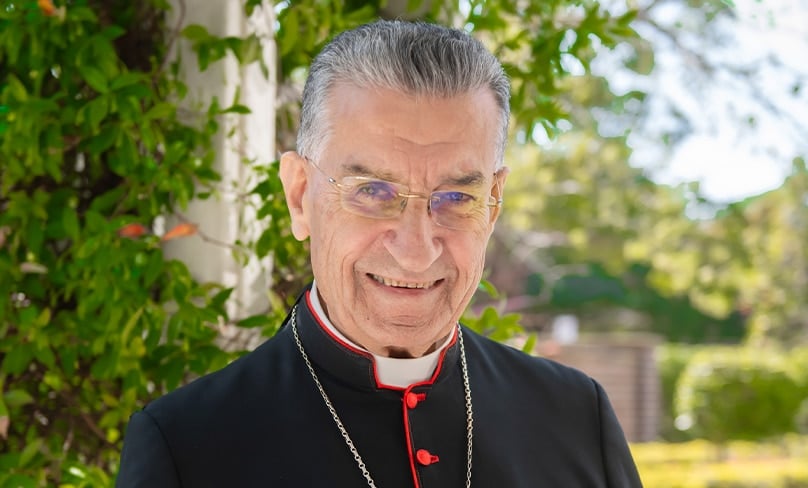
From his entrance into monastic life aged only 13, to his election as Maronite Patriarchate of Antioch and all the East in 2012, His Beatitude Mar Bechara Boutros Cardinal Rai has lived at the heart of his church, through Lebanon’s joys and recent sorrows.
But the patriarch is in Australia this week to celebrate. In this golden jubilee year, acknowledging 50 years of the Maronite Eparchy, what is he most proud of his people for having achieved?
His Eminence is a polyglot, speaking Arabic, French, English among other languages, but jetlag and Australian accents meant he had an esteemed interpreter for his interview with The Catholic Weekly: Maronite Eparch, Bishop Antoine-Charbel Tarabay.
“The most important strength, and what he’s proud of, is what was achieved in terms of parishes, schools, nursing homes, and getting the people together as community, united in the faith and the love of the Lord,” Bishop Tarabay interpreted.
“He is very humble!” the patriarch added, with a laugh. “I said, the best diocese we have is Australia!”
The two leaders, smiling together at the Maronite headquarters at Beit Maroun, Strathfield, have much to celebrate.
The first Maronites arrived in Australia in the mid-19th century, their first parish was established in 1897, and the eparchy was established in 1973.
In the 50 years since, it has grown to be one of the most recognisable and dynamic spiritual presences in Australia’s premier city, with flourishing youth ministries, charitable works, and a rich spiritual and liturgical life.
As a sign of just how feted the Maronite community has become, the 18 September blessing of Our Lady Mercy Place, Harris Park, a new aged care facility, included a list of dignitaries as tall as a bishop’s mitre.
Joining His Beatitude were more than half-a-dozen current and former members of State and Federal Parliament, consular officials, local councilors, the CEO of the Bank of Sydney, and the leadership of Multicultural NSW.
His Beatitude said he was proud of how far Maronites have come in Australia, making significant contributions to our national fabric, in social and political life.

“This is a sign that the Maronite people are reciprocating what Australia provided to them, giving them the opportunity of a good life, and social security—what Australia is always providing for all migrants,” he said.
“Maronites are very, very loyal, and very much recognise what Australia has given them as a migrant community.”
“They love Australia. They love Australia!” he added, in English.
Australia’s Maronites are also famously loyal to their homeland, and are well-connected, providing vital and well-organised support for their beloved country, at present embroiled in unprecedented political, economic and social crisis.
The historic nation’s economic woes have seen its currency devalued by nearly 98 per cent, GDP contract by 40 per cent, and nearly 80 percent of the population pushed into poverty, the International Monetary Fund reported earlier this year.
In addition, nearly two million Syrian refugees also live in Lebanon, in extreme poverty, making Lebanon the country with the highest population of refugees per capita in the world, according to Human Rights Watch.
In welcoming his patriarch, Bishop Tarabay noted that remittances from the diaspora had become an economic lifeline for many families in Lebanon; a gala dinner during the week of golden jubilee celebrations will raise funds for school children to complete their education, “building hope in a better future.”
Their support for their homeland as individuals and a community means Australian Maronites could be considered “a model for other Lebanese communities in the diaspora,” His Beatitude said.
This is also because of how they have preserved their unique Syriac-Antiochian identity outside of its spiritual cradle, where “they have their history, their culture, their saints and their patriarchate.”
His Eminence said it was a duty of Maronites in Australia to remain true to their cultural identity, as well as their spiritual inheritance, during this time of upheaval.
“There is a UN resolution which declares Lebanon as the academy of the human person and a venue for the encounter of religions and civilisations,” he said.
“This resolution makes it mandatory for Lebanon to safeguard its very essence; positive neutrality, avoiding to take part in regional or international wars or conflicts, and be able to promote peace, justice and human rights in accordance with the human rights charter.

“The reality at the present time is that there is one party which decides in matters of war and peace, independently of the Lebanese government, and drags the county into wars.”
His Beatitude was made a cardinal of the universal church by Pope Benedict XVI in 2012, and said it was a sign of the church’s beauty that in Sydney so many Eastern Catholics can make their home, bringing their unique liturgical and spiritual gifts to enrich our city.
In this respect, Sydney could be considered a model for the global church, “provided that co-operation and complementarity between the Latin and Eastern churches persists, with the aim of enriching the Body of Christ, which is the church.”
“At the same time, when we look at it from a different angle, we understand that we have the Roman Catholic Church as our elder and bigger sister, we’ll say,” the patriarch said.
“We know that the Eastern Church very much relies on the Latin Catholic Church here.
“But we say, at the end of the day these liturgies, they are the way forward to keep the identity of these Eastern churches.”
His Eminence was born in Himalaya, Lebanon, in 1940 and joined the Maronite Mariamite Order aged only 13, taking his first vows at 17.
He was ordained a priest aged 27, a bishop at 47, and has served as a school principal, director of Vatican Radio, Rector of the Monastery of St Anthony the Great and Bishop of Jbeil (Byblos).
He was elected by the Synod of Maronite Bishops as their 77th Patriarch in 2012, taking his place in a line stretching back to the Apostle Peter, who established the Bishopric of Antioch.
His Eminence will also preside over the Sixth Congress of Maronite bishops of eparchies outside the patriarchal territory and general superiors of Maronite religious orders, during his trip.
